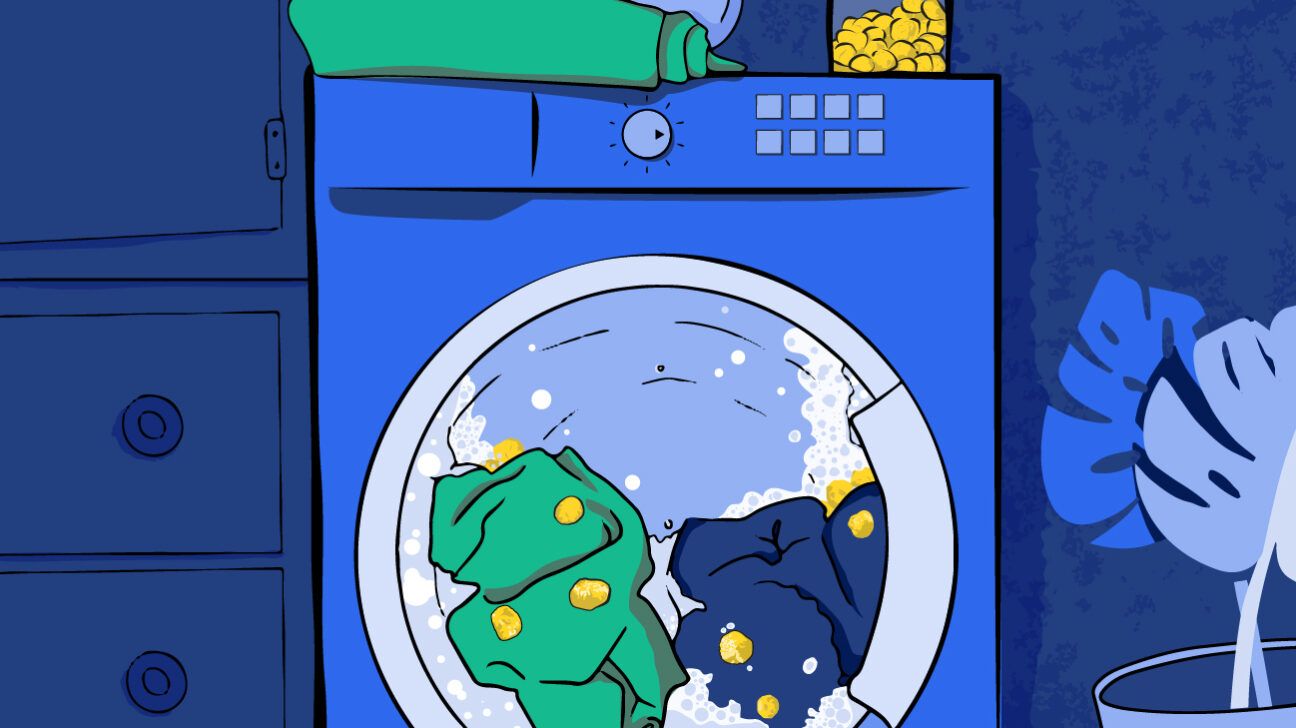
For several years now, my New Year’s resolutions have centered on implementing a new plan (big or small) to reduce waste in our household. For example, 5 years ago, I decided to start shopping the majority of our dry food from bulk bins. Every year it’s a new challenge. This year, I decided to continue to lighten my laundry footprint by trying out soap nuts.
Soap nuts aren’t actually nuts at all. They’re berries. They grow on the Sapindus mukorossi tree, which is native to sub-tropical regions of Asia but also grows well in warmer regions like South America.
The berries — which are antibacterial and antifungal — earned this moniker because they contain a natural soap called saponin. When the berries absorb water, they release the soap. And with some agitation, like in a washing machine, you can see how they could effectively work as a sustainable substitute to traditional laundry powders and liquids.
While takes up to a decade for the tree to yield berries, once it takes off the tree is incredibly prolific. That’s a lot of laundry.
Normal load
Soap nuts often come packaged in a muslin bag. I had two, 2-by-3 inch small muslin bags. Per the instructions, I popped about five berries into one of the mini bags and tied it up tight. I tossed the bag in my front load washing machine and pressed start. When the cycle finished, I laid the bag in the sun to dry before reusing.
Admittedly, I accidentally put the soap nuts in the dryer. That part is a little tricky to remember when you’re cranking out load after load on laundry day! So long as they aren’t brittle you can still use them. But they will wear quicker from the heat.
You can use the set of 5 to 7 berries, respectively, about five times, or until they fall apart. When it’s time to replace, just discard the old ones in the compost bin. Easy!
Dirty load
If you’re washing a large load, or a particularly dirty load (I’m looking at you, parents) you can drop a couple more berries into the bag. If you wash your clothes on cold, which is more energy efficient, you can also soak the berries in a small pot of hot water, which will help trigger the soap release quicker. Then add the berries and the pot of soapy hot water to the washing machine.
DIY detergent
You can also make your own soap nut liquid detergent. Simply place 10 to 15 ounces of soap nuts into 4 cups of boiling water. Simmer for 30 minutes and strain into a bottle or mason jar. The liquid is good for a week.
To treat stains, add it directly to clothes and or add 2 tablespoons to a front load washer or 1/4 to a 1/2 cup to your regular washing machine.
Because, like I mentioned, soap nuts are actually berries, they’re safe for people with nut allergies. The berries are fragrance-free, so your laundry will come out smelling the same. They’re also hypoallergenic and biodegradable.
I didn’t notice any difference in the cleanliness of our clothes. (I was already using a laundry powder that I purchase in bulk bins from the natural food market in the Bay Area where I live.) But unlike bulk laundry detergent, soap nuts seem a little easier to come by. I found them in the cleaning and toiletries aisle at Trader Joe’s for $5.99.
Soap nuts are a keeper. I store mine in a glass cracker jar on a shelf in my laundry room. You can buy them here, here and here. Kind of like my pantry lined with jars of bulk foods, it’s a reminder that while breaking a habit is a bit more work, it feels good to make a switch and learn something new.
Chantal Lamers is the Home Editor at Greatist, covering everything from design to DIY to zero waste topics. Find her tips on homesteading (and chicken wrangling) in the suburbs on Instagram.
